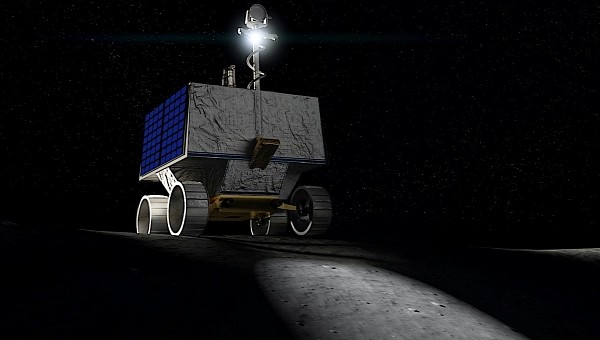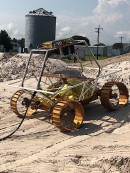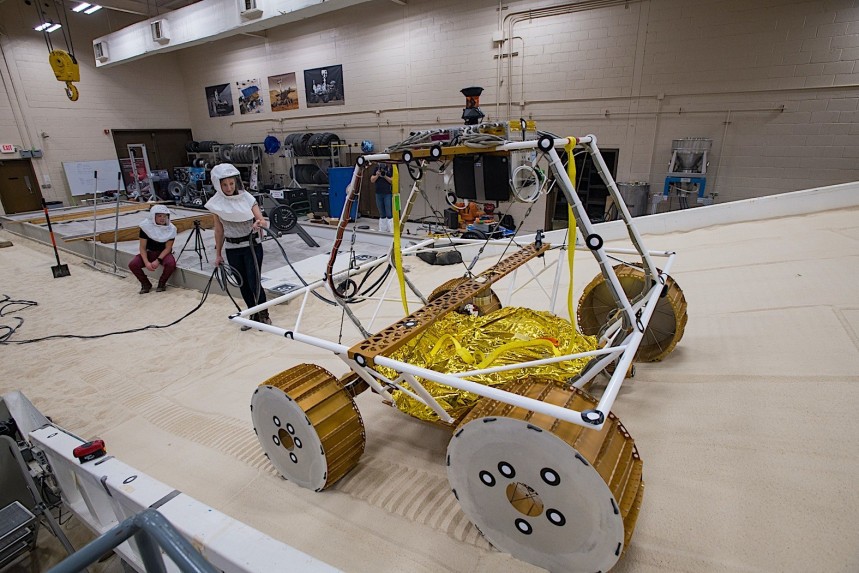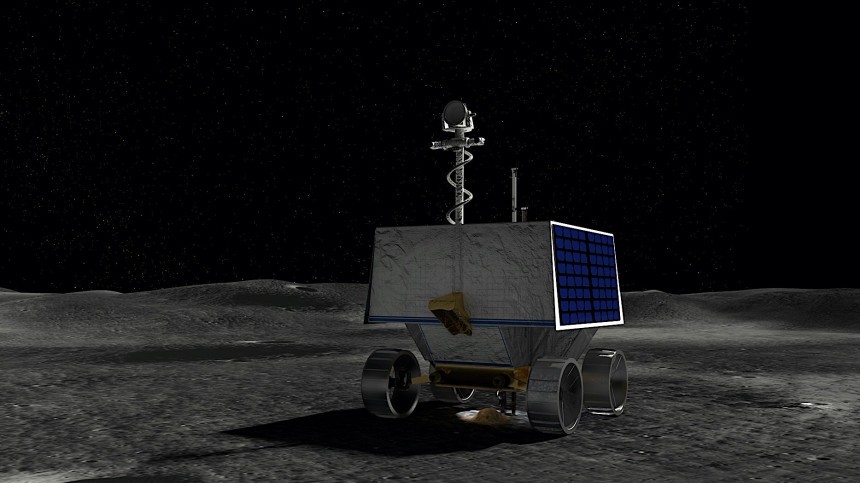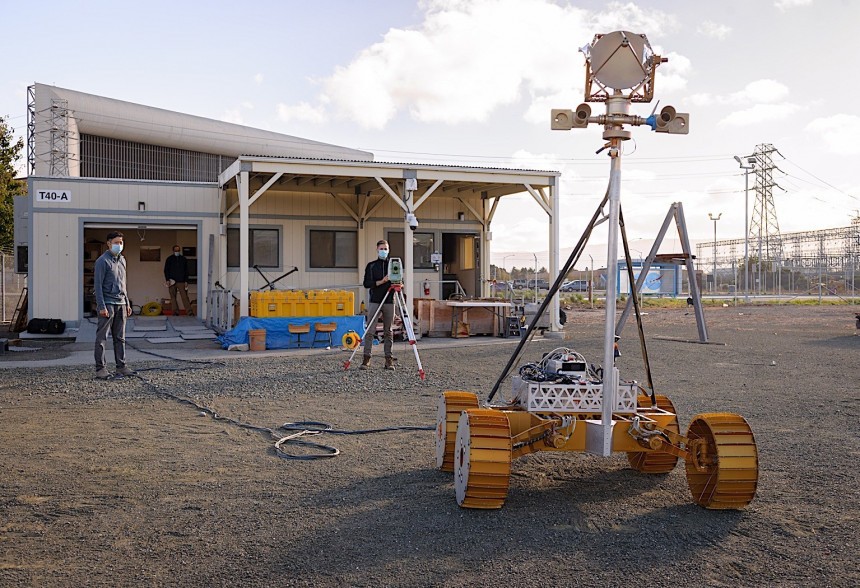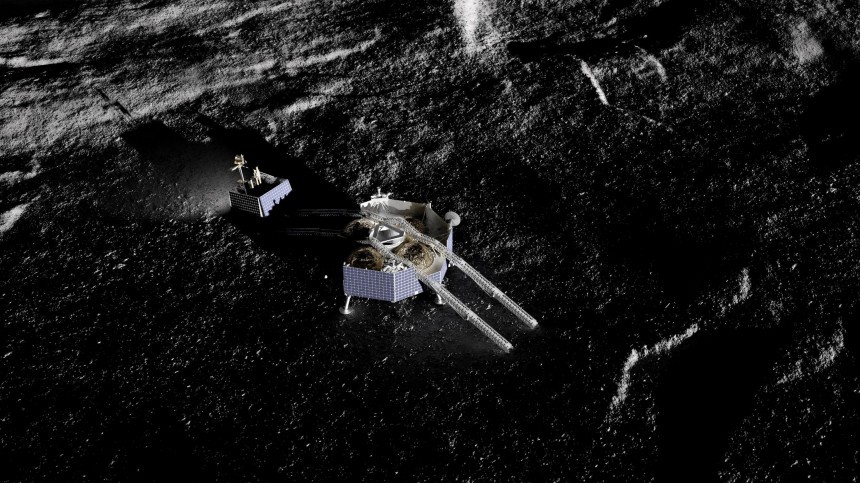There's a short list of the greatest creations to come out of Pittsburgh, Pennsylvania. It includes Terry Bradshaw, the world's biggest bicycle museum, and deli sandwiches with french fries and coleslaw inside. But if you ask us, that list should include NASA's VIPER rover. It's also a certified Yinzer. That's just local slang for a proud native of Pittsburgh.
We last touched on the cliff notes of what's been planned for the VIPER rover program in January of last year. But let's take an even deeper look into the nuts and bolts of the affair. The Americans may have dominated landing probes and rovers on Mars for decades. But the Moon? That's a surprisingly different story. With the glaring exception of the three Apollo manned rovers, it's actually the Soviets who've roved around the Moon's surface the most in the last 50 years.
If that Soviet Moon jalopy can manage all these feats, imagine what NASA can do with modern computer horsepower. That brings us to the brains behind the VIPER Rover. Headquartered between the Pittsburgh neighborhoods of Manchester and East Allegheny, Astrobotic Technology is one of the city's crown-jewel private companies. In a town that's home to eight headquarters of Fortune 500 companies, that's saying something. Founded in 2007 by a Carnegie Mellon University professor, Astrobotic Technology now realizes that a goal to win the Google Lunar X Prize is now something far more substantial.
Astrobotic's biggest claim to fame thus far has been the remarkable Peregrine autonomous lunar landing platform. Appearing like a scaled-down Apollo-era Grumman LEM, this collaborative effort between Astrobotic and Airbus has payload suppliers ranging from DHL to Northrop Grumman and even NASA themselves. Oh, and also MrBeast, when he isn't curing the blind in his spare time.
Astrobotic's first design study into lunar rovers began back in 2012. Under the name Polaris, an all-new spacecraft bus was to be developed for a special type of Moon mission. A mission that involved landing directly on top of the lunar North Pole with a special rover weighing up to 110 kg (240 lb), including extra payload. A rover concept involving similar hardware to the popular CubeSat architecture most popular in Low Earth Orbit has also been designed.
Along the way, VIPER will use a sophisticated, lightweight, meter-long (3,28-ft) drilling tool to bore beneath superficial lunar dust to uncover what lies beneath. It's thought the lunar surface could be a gold mine of rare-Earth materials. Be it elements like gold, silver, mercury, or even nuclear isotopes useful for fusion or fission energy. If it dwells beneath the soil, VIPER's job is to uncover it. If successful, the rover's findings will be instrumental in determining landing spots for future human-crewed Artemis missions.
For the moment, the spot picked for the first VIPER rover's deployment is the Nobile crater at the lunar South Pole. With a diameter estimated at 73 kilometers (45 mi) and an undetermined depth, this region is thought to be home to large deposits of sub-surface water ice. If true, this water could be melted down and purified for astronauts to consume. Or, more likely, it would be elementally separated into hydrogen and oxygen to be turned into rocket fuel and oxidizer.
Over the planned 100 days of surface operations, the VIPER will prod and probe the Nobile crater dozens, perhaps even hundreds of times to look for compounds useful for human space operations. Whether the spot the rover drills through is in direct sunlight or not could determine a great deal about the chemical composition that lies beneath its drill. It's a very costly operation, one that's already racked up as much as $433.5 million in development costs.
These two devices will be vital to identifying the exact nature of what materials lie beneath the surface of the Nobile crater. Meanwhile, the probe's Mass Spectrometer Observing Lunar Operations machine was developed in-house at NASA's Kennedy Space Center. It's all in support of the Regolith and Ice Drill for Exploring New Terrain (TRIDENT) device from Honeybee Robotics. For a 430 kg (950 lb) probe, that's pretty impressive.
Should it survive, the VIPER rover will join the Chinese Yutu-2 rover as the only two active rovers on the lunar surface. Don't be surprised if that number begins to skyrocket after the human-crewed Artemis III mission sends people to the Moon for the first time in five decades in 2025. Heaven willing, the Artemis program will be extended beyond the original block of missions planned. Rest assured. The VIPER rover will be instrumental in determining where these missions will land if this comes to pass.
No word yet on whether the first VIPER rover manufactured will be the first in a series of probes or a one-and-done deal. Astrobotic likely has the manufacturing capability to make more than one of these novel rovers. But it'll no doubt be imperative to the future of the VIPER program that the first mission goes off without a hitch.
At the moment, the first VIPER rover is due to launch aboard a Falcon Heavy booster rocket from LC-39A at Kennedy Space Center in November 2024. For those of you who don't know, that's the very same launch complex from which Apollo 11's Saturn V launched in July 1969. If that isn't some master-level symbolism, we don't know what is. The Soviets took advantage of every mistake NASA made in the early 1960s; we'd be foolish to think the Chinese can't do the same.
With that in mind, there's a great deal of pride, money, and expectations wound up into every nut and bolt of the VIPER rover program. It could be the mission that makes the company real big-wigs in the aerospace sector. Not just another scrappy upstart company from a city known for its scrappy underdog mentality, but a juggernaut of their field. Best of luck to the Astrobotic team on competing for their mission successfully. With all that's at stake, a little luck, plus a wealth of brains can do some pretty amazing things.
Check back soon for more space probe profiles here on autoevolution.
Putting NASA back on the lunar surface
Accomplishments like the first image of the Moon's far side and the longest distance traveled across its surface are the two most relevant accolades of the Soviet lunar probe program. The Lunokhod 2 rover traveled nearly 25 miles, back in the early 1970s, using sketchy Soviet computer hardware. Two Lunokhod rovers roamed the lunar surface under the Luna umbrella program. This was followed by two further Chinese rovers in the 21st century.If that Soviet Moon jalopy can manage all these feats, imagine what NASA can do with modern computer horsepower. That brings us to the brains behind the VIPER Rover. Headquartered between the Pittsburgh neighborhoods of Manchester and East Allegheny, Astrobotic Technology is one of the city's crown-jewel private companies. In a town that's home to eight headquarters of Fortune 500 companies, that's saying something. Founded in 2007 by a Carnegie Mellon University professor, Astrobotic Technology now realizes that a goal to win the Google Lunar X Prize is now something far more substantial.
Astrobotic's biggest claim to fame thus far has been the remarkable Peregrine autonomous lunar landing platform. Appearing like a scaled-down Apollo-era Grumman LEM, this collaborative effort between Astrobotic and Airbus has payload suppliers ranging from DHL to Northrop Grumman and even NASA themselves. Oh, and also MrBeast, when he isn't curing the blind in his spare time.
An official endorsement from NASA themselves
It was at the start of NASA's Commercial Lunar Payload Services program that gave Astrobotic a chance to deploy its hardware in space. Using the newly developed and more capable Griffin lander, the VIPER will land at a pre-selected spot on the lunar surface. Once down on the surface, the roughly quad-bike-sized rover measuring 5 by 5 by 8 feet (1.5 m by 1.5 m by 2.5 m) will depart its cradle for at least a 12-mile (20 km) excursion across the lunar regolith.Along the way, VIPER will use a sophisticated, lightweight, meter-long (3,28-ft) drilling tool to bore beneath superficial lunar dust to uncover what lies beneath. It's thought the lunar surface could be a gold mine of rare-Earth materials. Be it elements like gold, silver, mercury, or even nuclear isotopes useful for fusion or fission energy. If it dwells beneath the soil, VIPER's job is to uncover it. If successful, the rover's findings will be instrumental in determining landing spots for future human-crewed Artemis missions.
For the moment, the spot picked for the first VIPER rover's deployment is the Nobile crater at the lunar South Pole. With a diameter estimated at 73 kilometers (45 mi) and an undetermined depth, this region is thought to be home to large deposits of sub-surface water ice. If true, this water could be melted down and purified for astronauts to consume. Or, more likely, it would be elementally separated into hydrogen and oxygen to be turned into rocket fuel and oxidizer.
Far more important than you might think
That's up from an estimate of $250 million to run the VIPER program back in 2019. But hey, in the era of the SLS rocket, any space mission that doesn't break the billions is one heck of a bargain. VIPER will help save on operating costs by bringing only the bare necessities in terms of science payload. Two of the rover's four main science instruments, the Near InfraRed Volatiles Spectrometer and the Neutron Spectrometer System, come from NASA's Ames Research Center.These two devices will be vital to identifying the exact nature of what materials lie beneath the surface of the Nobile crater. Meanwhile, the probe's Mass Spectrometer Observing Lunar Operations machine was developed in-house at NASA's Kennedy Space Center. It's all in support of the Regolith and Ice Drill for Exploring New Terrain (TRIDENT) device from Honeybee Robotics. For a 430 kg (950 lb) probe, that's pretty impressive.
Should it survive, the VIPER rover will join the Chinese Yutu-2 rover as the only two active rovers on the lunar surface. Don't be surprised if that number begins to skyrocket after the human-crewed Artemis III mission sends people to the Moon for the first time in five decades in 2025. Heaven willing, the Artemis program will be extended beyond the original block of missions planned. Rest assured. The VIPER rover will be instrumental in determining where these missions will land if this comes to pass.
Bring it on, China
NASA is currently engaged in a space-related arms race of sorts with the Chinese. One which, in practice, is playing out much the same as the old American vs. Soviet space race of 50 years ago. For the United States to come out on top again, every cog in the NASA machine has to fire on all cylinders.At the moment, the first VIPER rover is due to launch aboard a Falcon Heavy booster rocket from LC-39A at Kennedy Space Center in November 2024. For those of you who don't know, that's the very same launch complex from which Apollo 11's Saturn V launched in July 1969. If that isn't some master-level symbolism, we don't know what is. The Soviets took advantage of every mistake NASA made in the early 1960s; we'd be foolish to think the Chinese can't do the same.
With that in mind, there's a great deal of pride, money, and expectations wound up into every nut and bolt of the VIPER rover program. It could be the mission that makes the company real big-wigs in the aerospace sector. Not just another scrappy upstart company from a city known for its scrappy underdog mentality, but a juggernaut of their field. Best of luck to the Astrobotic team on competing for their mission successfully. With all that's at stake, a little luck, plus a wealth of brains can do some pretty amazing things.
